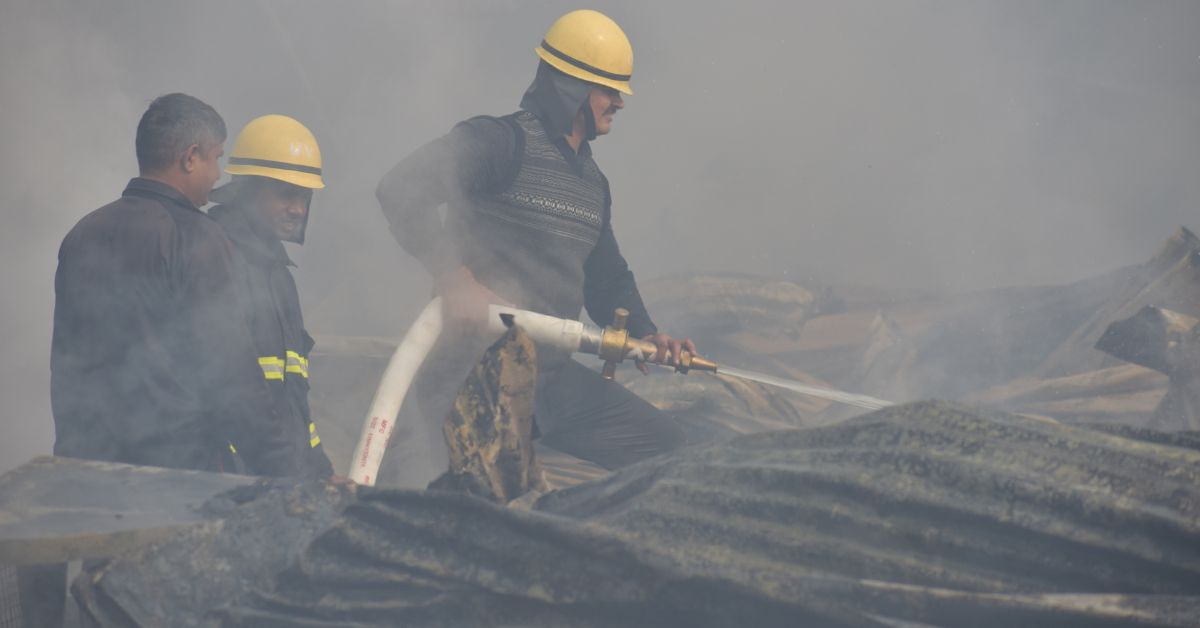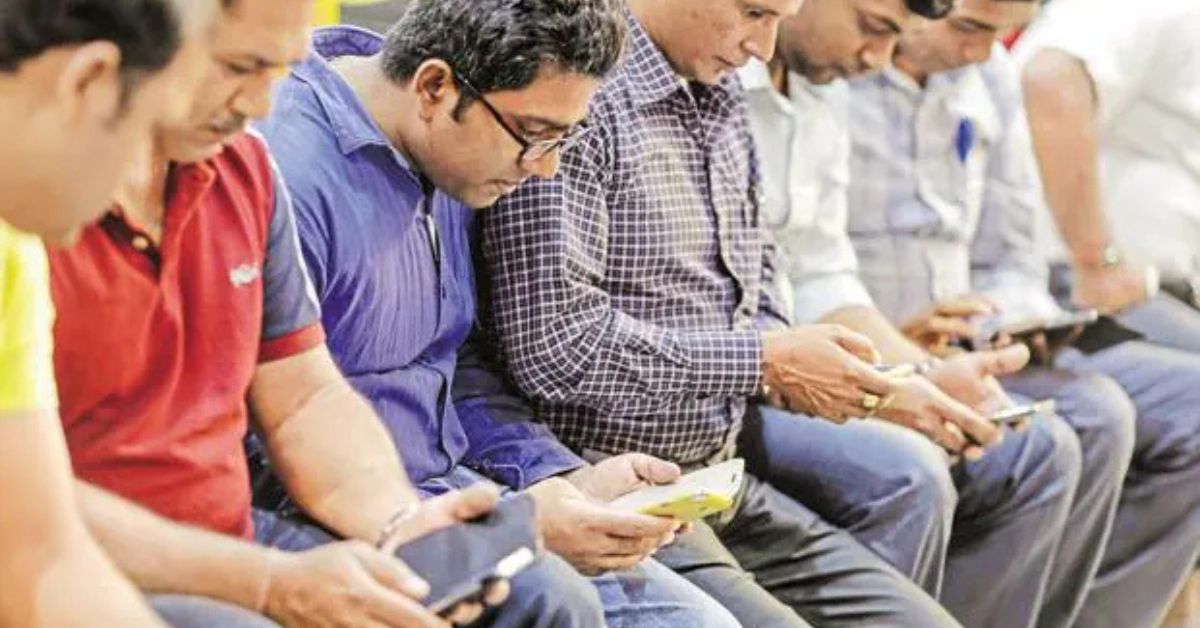As the Ahmedabad Plane Crash Becomes Viral Content, You Can Choose to Respond With Empathy
(Representational featured image courtesy Shutterstock)
When the Air India Boeing 787 Dreamliner, operating as Flight AI171 from Ahmedabad to London, crashed right outside the Sardar Vallabhbhai Patel International Airport into the hostel of B.J. Medical College, it broke more than metal and glass. It shattered the hearts of families waiting at terminals, of colleagues scrolling through flight trackers in disbelief, of children who would never again run into their parents’ arms, and of young aspiring doctors whose dreams were tragically cut short.
In the hours that followed, the response was immediate – but not always helpful. Videos were shared with little context. Speculation ran wild. Graphic images began circulating before authorities could confirm how many lives were lost. And amidst all of this, people waited for names, for calls, for some closure.
 An Air India flight travelling to London from Ahmedabad crashed on June 12. (Representational picture source: Shutterstock)
An Air India flight travelling to London from Ahmedabad crashed on June 12. (Representational picture source: Shutterstock)
In moments of profound crisis, it’s easy to feel utterly helpless, swept up in the current of information and emotion. But the truth is, every one of us, whether we’re a content creator, a social media influencer, a journalist, an aviation professional, or simply an online user, has a crucial role to play. Helping after a tragedy doesn’t always mean rushing to the site or starting a fundraiser. Sometimes, it begins with restraint, with critical thinking, and with the simple, powerful act of not amplifying harm.
This is not a story about wreckage. It’s a story about how we respond when something unthinkable happens, and how our humanity can guide our digital presence.
What you share online matters: empathy is the algorithm
In the immediate aftermath of a tragedy, the urge to share, to inform, to process what’s happening, is natural. But before forwarding a video, posting an update, or even commenting, pause and ask yourself some fundamental questions:
- Is this information verified by official sources? Unverified reports can cause widespread panic and distress.
- Is this image or video necessary? Graphic visuals of wreckage or, worse, human remains, are not just distressing; they are deeply disrespectful to families who may not even have been notified yet. Sharing them doesn’t help; it only multiplies trauma. Consider that individuals exposed to unverified, graphic content after a major event report increased anxiety and psychological distress.
- Could this content cause further pain to someone looking for their loved one? Imagine receiving news about a family member through a random social media post rather than an official notification.
 Before sharing, ask: is this verified, necessary, and respectful — or could it cause more harm to grieving families? (Representational picture source: Shutterstock)
Before sharing, ask: is this verified, necessary, and respectful — or could it cause more harm to grieving families? (Representational picture source: Shutterstock)
Empathy is just as important in digital spaces as it is in physical ones. This means being thoughtful about the language we use online. Avoid definitive phrases like “everyone on board must be dead” or “pilot error” unless those facts have been officially confirmed. Avoid speculating about terrorism, sabotage, or negligence without concrete evidence. Conspiracy theories might feel like you’re “uncovering the truth,” but in reality, they often do more damage than good. They shift the focus from those grieving to sensationalism, often leveraging existing societal anxieties.
If you have a digital presence or influence, consider this your guiding principle: empathy is the algorithm.
- Before you forward that “leaked list of victims,” ask yourself: Would I want this shared if it were the name of my loved one, before my family knew?
- Before you post a selfie at a sensitive location, ask: Is this about me – or about those affected? Does this trivialise their pain?
- Before you believe a voice note claiming sabotage, ask: Who benefits from this fear and division? What is the verified source?
Instead of posting, listen. Instead of assuming, verify. Instead of speculating, hold space for silence and sorrow. Your digital footprint is powerful; use it to comfort, not to confuse.
If you’re local: how your presence can truly help
For those living near the site of a tragedy, like the residents of Ahmedabad, it’s natural to feel a deep desire to help. Your presence and willingness to act can make an immense difference, even without a uniform or an official role. Small, thoughtful gestures can provide significant comfort and practical support to those most affected.
If you’re looking for ways to contribute directly on the ground, here are some impactful avenues:
- Offering practical assistance: Consider offering rides to individuals who might be stranded near the site or at Sardar Vallabhbhai Patel International Airport. Many may be disoriented, and a simple offer of transportation can be a lifeline.
- Providing sustenance and shelter: Local shelters and community centres often become hubs for affected families and first responders. You might consider preparing meals to donate or contributing to efforts to provide food and temporary lodging. Organisations like the Ahmedabad Municipal Corporation’s community kitchens or local NGOs often coordinate these efforts.
- Donating blood: In major emergencies, hospitals face an immediate and critical demand for blood. Showing up at major hospitals like Civil Hospital, Ahmedabad or contacting local blood banks like the Indian Red Cross Society, Ahmedabad Branch (located at H.K. House, Ashram Road), can provide vital support. A single donation can potentially save up to three lives.
- Amplifying verified appeals: Use your local knowledge to share accurate, verified information about official helplines and donation points. This can be crucial in guiding support to where it’s most needed and preventing the spread of misinformation. Look for updates from the Ahmedabad District Collector’s Office or the Gujarat State Disaster Management Authority (GSDMA).
 Rescue teams are working tirelessly to assist the families of the Air India plane crash victims. (Representational picture source: Shutterstock)
Rescue teams are working tirelessly to assist the families of the Air India plane crash victims. (Representational picture source: Shutterstock)
These services are working around the clock to coordinate support and donations. Even a small gesture, like checking in with local hospitals to see what their most pressing needs are, or amplifying verified appeals from official sources, can make a tangible difference in a moment of crisis.
- Ahmedabad Collector Helpline: 1077
- Disaster Management Cell: 079-27560511 / 27560512
- Civil Hospital Emergency Desk: 079-22681044
- Blood Donation Support: Red Cross Society Ahmedabad – 079-26460914
- Indian Red Cross WhatsApp Helpline: +91 93077 97979
Whether you’re a content creator, a social media manager, a journalist, a podcaster, or anyone who commands a significant online audience, your responsibility during a tragedy is immense. Covering or even simply commenting on tragedy requires care, nuance, and a profound respect for human dignity.
 If you have an audience, you also carry a responsibility — to cover tragedy with care, nuance, and deep respect for those affected. (Representational picture source: Shutterstock)
If you have an audience, you also carry a responsibility — to cover tragedy with care, nuance, and deep respect for those affected. (Representational picture source: Shutterstock)
- Prioritise Verification Over Speed: The urge to be first can be powerful, but misinformation spreads six times faster than true information on social media. Verify every detail from official sources before going public.
- Dignity Over Sensationalism: A news story is not a “scoop” when it involves someone’s son or sister or friend. Avoid sensational headlines, protect the identities of victims until families are officially informed, and never use graphic imagery purely for shock value. These are not just best practices; they’re ethical imperatives.
- Highlight Support Systems: Instead of focusing only on the wreckage or speculation, use your platform to highlight stories of rescue, systems of support, official helpline information, and discussions around safety improvements. Reporting can be humane and rigorous at the same time.
- Provide Context and Expertise: If you have domain expertise (e.g., in aviation, crisis management, psychology), use it responsibly to offer calm, factual explanations. Helping the public understand how complex systems work, what safety protocols exist, or what the timeline of an investigation usually looks like can provide immense comfort and clarity in a moment of chaos, preventing the vacuum that misinformation thrives in.
The story doesn’t end when the headlines do
A week from now, the immediate news cycle will move on, and the hashtags will fade. But for countless individuals, the journey of grief and recovery will just be beginning. Some people will still be sitting with unanswered questions and inconsolable absences. This is when your responsibility as a compassionate digital citizen becomes even more powerful.
 Unverified claims, WhatsApp forwards should be done with utmost care in such cases. (Representational picture source: Bloomberg)
Unverified claims, WhatsApp forwards should be done with utmost care in such cases. (Representational picture source: Bloomberg)
- Combat Lingering Misinformation: Don’t let unverified claims or conspiracy theories sneak in while the world looks away. Continue to share factual updates from official investigations.
- Validate Ongoing Grief: Don’t mock or dismiss grief just because it has lingered “too long.” There is no timeline for healing.
- Avoid “Moving On” Pressure: Don’t assume people “should be over it by now.” Grief is a marathon, not a sprint.
Instead, make space for memory. Let people mourn in peace. Advocate for better safety and accountability, and respect the silence that often accompanies deep sorrow. In a world increasingly driven by virality, choosing humanity, empathy, and responsibility is not just a moral choice – it’s an act of empathetic digital citizenship.
Edited by Leila Badyari
News